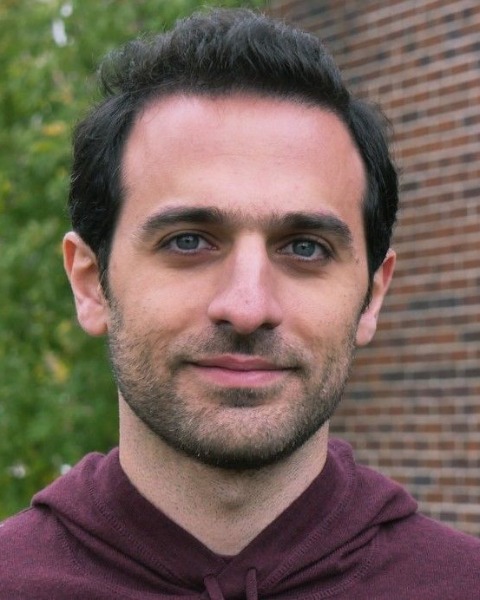Back
On-demand recording will be available 24hrs after the presentation.
Assay Development and Screening
In vitro Immunological Assays
The nELISA: a high-throughput proteomic technology enables phenotypic screening of PBMC secretomes
Tuesday, February 8, 2022
1:00 PM – 1:30 PM
Location: 205ABC

Milad Dagher, PhD
CEO & Co-Founder
Nomic Bio, Quebec, Canada
HTS programs are increasingly adopting high-content technologies that can better inform the selection of drug candidates early on in the pipelines. The shift towards high content tools has been enabled by HTS-friendly imaging and mRNA technologies such as Cell Paint and L1000 that yield cost-effective and high-throughput phenotypic data. In contrast, protein technologies compromise either content or cost, limiting access to protein profiles in HTS. Current high content technologies such as mass spectrometry or aptamer-based profiling are prohibitively slow and expensive for large screening campaigns, whereas the affordable gold-standard, ELISA, has proven difficult to scale. At fault has been the cross-reactivity between ELISA reagents when multiplexing beyond a few dozen antibody pairs.
Here, we describe the nELISA: a massively-parallelized high-throughput miniaturized ELISA. To overcome the long-standing cross-reactivity issue, the nELISA uses DNA oligos to pre-assemble each pair of antibodies onto a spectrally barcoded microparticle set. The resulting reagents are fully-integrated nELISA sensors that can be read-out on commercial cytometers, enabling highly-multiplexed and high-throughput analysis. Using this approach, we developed a comprehensive inflammatory panel containing 200 cytokines and chemokines. Our results show that the nELISA can maintain single-plex specificity, sensitivity, and quantification as content is scaled to 200-plex, and as throughput is scaled to 1536 samples/cytometer/day, yielding >300,000 data points in a single day, at a cost amenable to high-throughput screening.
To demonstrate the nELISA ’s utility in HTS, we ran an automated secretome screen of PBMCs treated with inflammatory stimuli. 200 cytokines were profiled in ~10,000 PBMC supernatant samples in 1 week, resulting in 2M datapoints. The nELISA was able to discriminate between stimuli affecting T cells or macrophages, as well as stimuli activating different signaling pathways. Importantly, the screen identified response-modulating cytokines that would not have been identified with a 1 to 10-plex panel commonly used with other technologies.
Our presentation will further elaborate on the technology underpinning the nELISA , its ability to integrate into existing HTS workflows, as well as complimentary screening tools, from target identification to lead optimization.
Here, we describe the nELISA: a massively-parallelized high-throughput miniaturized ELISA. To overcome the long-standing cross-reactivity issue, the nELISA uses DNA oligos to pre-assemble each pair of antibodies onto a spectrally barcoded microparticle set. The resulting reagents are fully-integrated nELISA sensors that can be read-out on commercial cytometers, enabling highly-multiplexed and high-throughput analysis. Using this approach, we developed a comprehensive inflammatory panel containing 200 cytokines and chemokines. Our results show that the nELISA can maintain single-plex specificity, sensitivity, and quantification as content is scaled to 200-plex, and as throughput is scaled to 1536 samples/cytometer/day, yielding >300,000 data points in a single day, at a cost amenable to high-throughput screening.
To demonstrate the nELISA ’s utility in HTS, we ran an automated secretome screen of PBMCs treated with inflammatory stimuli. 200 cytokines were profiled in ~10,000 PBMC supernatant samples in 1 week, resulting in 2M datapoints. The nELISA was able to discriminate between stimuli affecting T cells or macrophages, as well as stimuli activating different signaling pathways. Importantly, the screen identified response-modulating cytokines that would not have been identified with a 1 to 10-plex panel commonly used with other technologies.
Our presentation will further elaborate on the technology underpinning the nELISA , its ability to integrate into existing HTS workflows, as well as complimentary screening tools, from target identification to lead optimization.


